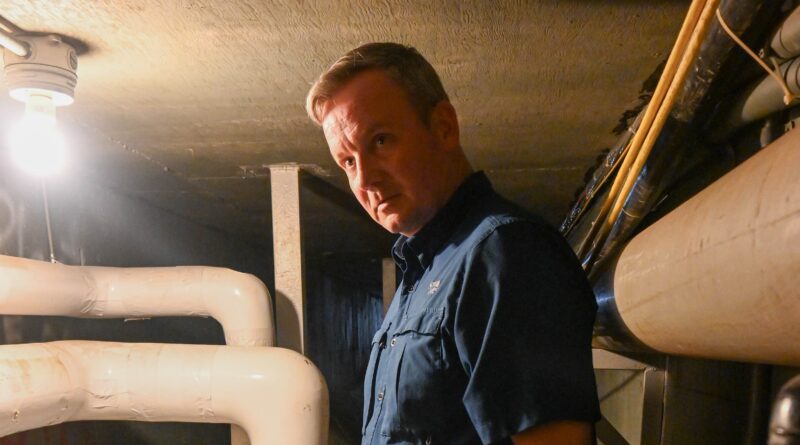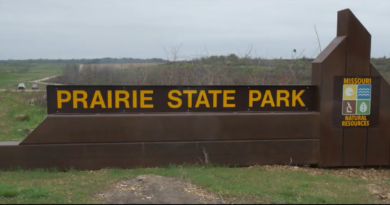PSU tunnel project to cause campus disruptions
By Riley Wagner
PITTSBURG – After over a year of planning, major renovations are underway on the steam tunnels running beneath Pittsburg State University’s campus, requiring a street to be closed and disrupting activities on the south end of campus.

The tunnels were originally built in 1914 to transport steam from the boilers in the university’s Physical Plant to buildings on campus. In 2013, a portion of the old brick tunnels were replaced with concrete.
In addition to their original function of transporting steam, the tunnels now also house utility lines, chilled water for cooling, and domestic water for the main campus buildings.
The university announced the need for repairs and began searching for a contractor for the job in 2024. A bid was selected by the state of Kansas in December.
University architect Lindell Haverstic said the renovations are badly needed.
“The brick tunnels are beyond repair, so new concrete tunnels are being built,” he said. “Some of the brick tunnels will be demolished.”
Haverstic said the steam tunnels have experienced failures dating back six years, with steam line failures in 2019 and dangerous conditions in the tunnels found in 2020.
The project is expected to take about 18 months to complete, with the total budget for construction, planning, and related efforts set at $9.1 million.
Whitesitt Hall and the Physical Plant itself will see the biggest disruptions. However, construction inside McCray Hall and the Overman Student Center is also planned.
Repairs began during the university’s spring break. A construction area was fenced off, barring public access to East Lindburg Street between Whitesitt Hall and the Physical Plant.
Haverstic said steps are being taken to limit disruptions to campus life as much as possible.
“Project managers are carefully planning necessary building, parking and pedestrian access for students, employees, parents of children who attend the nearby Little Gorilla Preschool, those who rely on deliveries at the campus post office, visitors to the Testing Center, and customers of Gorilla Graphics.”

However, he said the disruptions will to some areas will be extensive and will eventually touch the campus’s core. Future work will affect part of the Oval and further restrict access to buildings such as Whitesitt Hall.
Freshman Spencer Ward, a biology major with classes in Whitesitt Hall, said that he is not very familiar with the building, which makes the closed doors and construction around it even more confusing.
“Since I am not very familiar with the building, the new path will probably confuse my direction of where my class is,” Ward said.
The construction will also affect daily routines and student access, including disrupting classrooms located at the south and east side of Whitesitt as well as the university’s broadcast lab.
Along with hosting student classes, Whitesitt Hall houses businesses and campus resources that are open to the public and the university’s international student office. While students are a key concern for those on campus, many of the services run out of the building are primarily concerned with the impact on public access during the construction.
Jason Kermashek, manager of the Gorilla Graphics printing shop, said deliveries will be impacted, particularly for the graphic office.
“It will for sure affect us, like deliveries, and getting our rigid stock,” Kermashek said. “We will need an escort vehicle to get the trucks over here since there is no road now. Most off-campus customers will be affected by the parking situation and lack thereof.”
Tim Senecaut, director of facility operations, acknowledged that later phases of the renovations will be even more disruptive.These stages involve connecting the repaired tunnels to newer tunnels from the last renovation in 2013.
Senecaut said the work will be done in phases to minimize disruption, with the most impactful work slated to begin in the summer, when campus foot traffic is lighter.
He added that while the disruptions are unfortunate, the renovations are important to the university’s future.
“This project will make our steam heating system more efficient, resulting in utilities cost savings,” Senecaut said. “It will also provide a much safer working environment for the facility operations technicians and plumbers who provide preventive maintenance checks and services and repairs throughout the tunnel system.”



